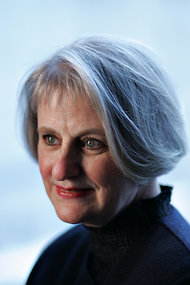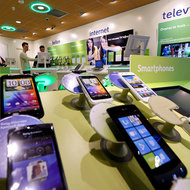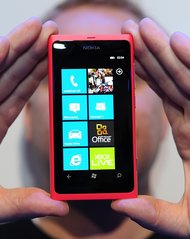As radio broadcasters go digital and online music services try to stand out in a crowded market, both are finding ways to scratch each other’s backs.
On Monday, Cumulus Media, which operates 525 radio stations, will announce a deal with Rdio, a subscription music service from the founders of Skype, that will give Cumulus an online outlet and help Rdio compete against more established players like Spotify.
In exchange for what it calls a significant equity stake in Rdio’s parent company, Pulser Media, Cumulus will give Rdio broad access to its programming and promote Rdio on its stations.
“This is our digital play,” Lewis W. Dickey Jr., the chief executive of Cumulus, said in a joint interview on Friday with Rdio’s chief, Drew Larner.
Crucially for Rdio, which was introduced in 2010 and has struggled to gain a foothold in the market, Cumulus will also sell advertising for a free version of the service in the United States. Rdio, which costs $5 to $10 a month and is available in 31 markets around the world, lets its subscribers listen to millions of songs, build playlists and interact with other users.
“The biggest challenge we face is really awareness,” Mr. Larner said. “We live in this bubble in which everybody is talking about this stuff constantly, but to the wider world, streaming is still relatively nascent.”
The deal between Rdio and Cumulus is a trade, with no cash changing hands. Further terms were not disclosed, but the value of Cumulus’s content and services is estimated at more than $100 million.
Cumulus operates stations like Nash FM (WNSH, 94.7 FM), the only country outlet in New York, and the rock station KFOG-FM in San Francisco. Last month, it announced a $260 million deal to buy Dial Global, which syndicates programming like NBC News and sports from the National Football League and the N.C.A.A. to thousands of stations; that deal is still subject to regulatory approval.
Cumulus will draw on its stations and syndicated shows to create playlists and other programs for Rdio users, stripping out localized details like traffic and weather.
That kind of content could give Rdio an edge against other services. But even more important is its ability to offer a free, ad-supported version to compete directly against Spotify. Cumulus will use its 1,500 sales agents around the country to sell commercials for Rdio’s free version, which is expected by the end of the year, and the companies will share ad revenue.
Rdio has never revealed its subscriber numbers, but they are believed to be far lower than those of Spotify, which has more than 24 million users, 6 million of whom pay. Yet recent studies of Rdio’s popularity in Google searches suggest it is faring well against other competitors like Rhapsody, Slacker and Mog.
Cumulus already supplies streams of its stations to Clear Channel Communications’ iHeartRadio app, a deal that should continue through at least next year. But Mr. Dickey called that arrangement “a marriage of convenience” and said that the Rdio deal allowed it to do much more.
“We’re trying to be much more active in the audio ecosystem than just passively handing our streams over,” Mr. Dickey said. “That has severe limitations in terms of our ability to monetize.”
By moving to the so-called freemium model, Rdio is hoping to attract new customers who can be enticed into paying for premium service. That model has allowed Spotify to grow more quickly than its competitors, but it is still a subject of debate in the industry over how many people will ultimately pay for service when so much digital music is available free.
“It’s not that people don’t like streaming music,” said Mark Mulligan, a music technology analyst. “It’s that people are unwilling or unable to pay $9.99 for the privilege.”

Article source: http://www.nytimes.com/2013/09/16/business/media/a-digital-deal-for-cumulus-and-rdio.html?partner=rss&emc=rss


